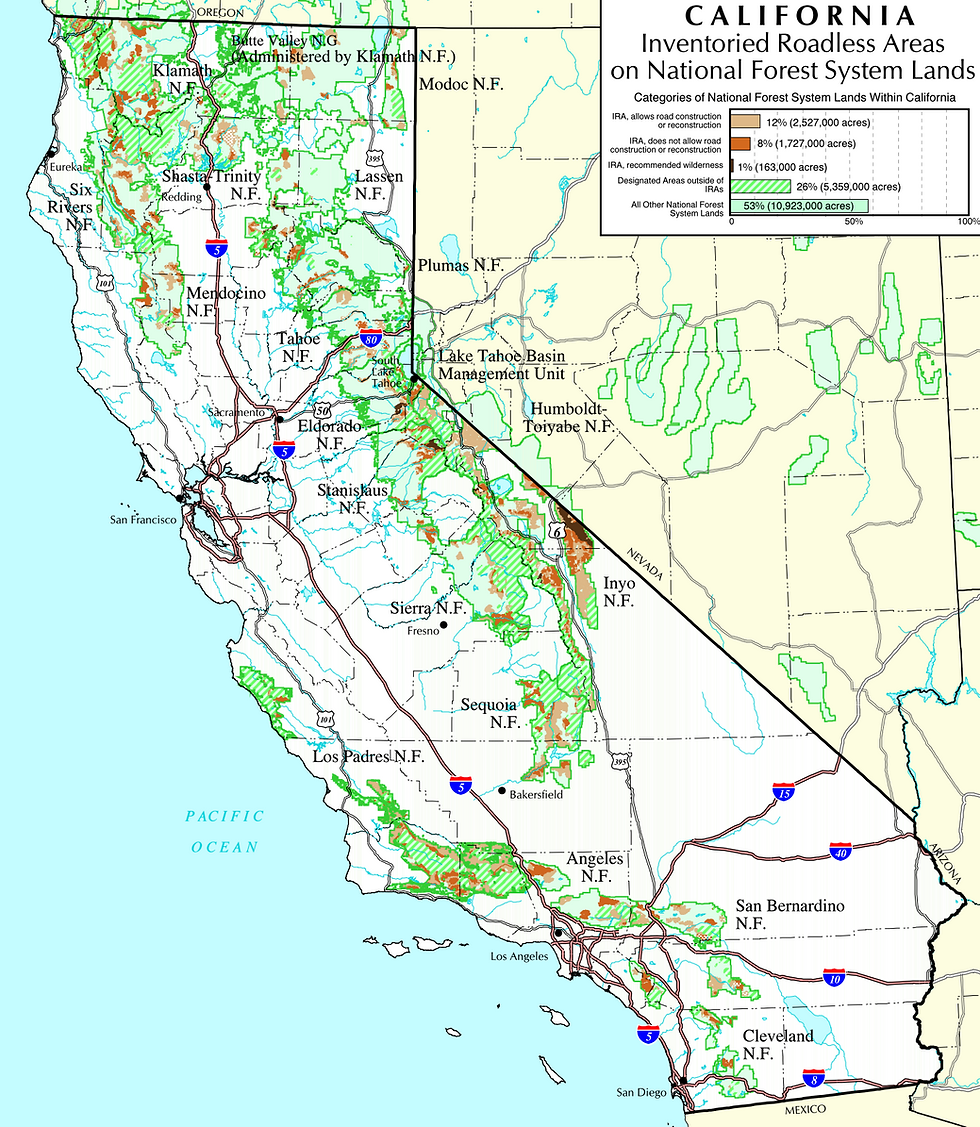SPI Seeks Loopholes to Log Owl Habitat
- Apr 15, 2011
- 3 min read
The case of THP 2-10-019TRI, “Ebert” represents a classic example of how the Cal Fire THP review process is fatally flawed, and why Cal Fire should not be the authority determining harm of Northern Spotted Owls. Companies like Sierra Pacific Industries (SPI) continue to push Cal Fire for ever-reduced protections for owls, and continue to propose logging that would result in harm to owls.

The circles above represent Northern Spotted Owl territory and the polygons represent SPI's applied forest management types within SPI's "Ebert" THP
THP 2-10-019TRI, “Ebert” contains a clearcut logging unit within 500 feet of a known Northern Spotted Owl (NSO) nest. SPI claimed that these potentially illegal operations would avoid harm to owls despite the close proximity and the severity of the proposed logging. The NSO home range to be impacted by this proposed clearcut logging has been identified as being deficient in essential high quality habitats that would support essential owl behaviors such as nesting, roosting, feeding, breeding, sheltering, and dispersal.
Despite the high risk of harm to owls posed by clearcut logging within 500 feet of a known owl nest, the Cal Fire THP review team recommended the “Ebert” THP for approval on March 23, 2011. On March 24, 2011, we contacted the US Fish and Wildlife Service to express our concerns over these proposed logging operations and the threat they posed to owls. The Service in turn contacted Cal Fire and expressed similar concerns.
During the course of our review of past activities near this NSO home range, we discovered that the unit in the “Ebert” THP was in fact a recycle of a unit that had been restricted to modified harvest by the US Fish and Wildlife Service under a previous technical assistance letter. Thus SPI was attempting to ‘double dip’ in this unit in very close proximity to an NSO nest site. Furthermore, we found that the Service had requested early involvement with planning of any further logging within this owl home range due to the lack of high quality habitats, and the potential for cumulative impacts and harm to occur.
The Cal Fire review team failed to pick up on any of this until we contacted the Service and the Service in turn contacted the Department. These essential facts demonstrate why Cal Fire does not have the expertise to make determinations regarding harm to owls. The review team process failed to consider past THPs within the range of the owls in question, and failed to consult with the US Fish and Wildlife Service’s technical assistance packages for past THPs.
On 3/25/11, Cal Fire back tracked and sent a letter to SPI, retracting the recommendation for approval, and giving SPI three choices to fix the situation: delete the unit, maintain the habitat characteristics per the previous Technical Assistance letter, or seek further Technical Assistance from the Service. On 3/30/11, SPI responded to Cal Fire by changing the harvest from clearcutting to selection, and also deferred harvest of the unit until the NSO home range in question is determined to be abandoned.
Cal Fire review team failed to catch significant problems with the THP as proposed before recommending it for approval. It is clear that Cal Fire did not consult the past TA’s when reviewing the THP. It is also clear that Cal Fire would not have balked at logging within 500 feet of the activity center had we not made the call to the US Fish and Wildlife Service. It is also clear that SPI was trying to get one over on Cal Fire, hoping that they wouldn’t notice the recycled unit. This is yet another example of how the Cal Fire review team process is flawed, and that the Department of Forestry is only movable on NSO take issues if someone else raises a concern. EPIC will continue to track THPs that threaten harm to owls and will continue to advocate for protection of owls and owl habitat on private lands in Northwest California.





Comments